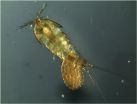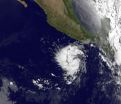(Press-News.org) Body cells detect signals that control their behavior through tiny hairs on the cell surface called cilia. Serious diseases and disorders can result when these cilia do not work properly. New research from UC Davis published this week in the journal Nature Cell Biology provides new insights into how these cilia are assembled.
"It's a basic discovery, but with implications for understanding disease," said Jonathan Scholey, professor of molecular and cellular biology at UC Davis and senior author of the study. Understanding how cilia are assembled and function can help scientists understand how conditions such as polycystic kidney disease and some growth and development disorders arise.
Cilia are built from bundles of microtubules made of a protein called tubulin. Scholey's team discovered how two subunits of tubulin are winched into place by a type of protein motor belonging to a family of proteins called kinesins.
Scholey's laboratory works with the soil roundworm Caenorhabditis elegans, whose cilia are essentially the same as those of humans and other mammals. Postdoctoral scholar Limin Hao, Scholey and their colleagues screened a collection of worms for those with mutations that affected the cilia.
They found two genes which, when mutated, caused worms to lose the tips of their cilia. Both genes turned out to be subunits of tubulin that are assembled into different parts of the microtubule: one is found all along the microtubule, and the other is concentrated at the tip.
The UC Davis team used a combination of microscopy, molecular biology and computer modeling to study these two proteins. They found that both are moved into position by so-called kinesin-2 motors.
At one time, researchers had seen cilia as purely for movement, either moving a swimming cell through a fluid or moving fluid and suspended particles over the cell's surface, Scholey said.
But in the late 1990s, researchers discovered that cilia were also involved in detecting signaling molecules that control gene expression and cell behavior. This signaling is vital for coordinating cell growth and the orderly development of tissues, for example in establishing left/right asymmetry in developing embryos.
"Recent work shows that cilia are ubiquitous in signaling," Scholey said. In earlier work, Scholey's lab linked a defect in the kinesins that assemble cilia to Bardet-Biedl disease, which causes blindness, kidney disease and learning difficulties.
###
Coauthors of the paper are: Melanie Thein, Ingrid Brust-Mascher, Gul Civelekoglu-Scholey and Seyda Acar, all at UC Davis; Yun Lu and Shai Shaham, Rockefeller University, New York; and Bram Prevo, Vrije Universiteit Amsterdam, The Netherlands, who was a visiting scholar in Scholey's laboratory. Hao is now a researcher at Harvard Medical School and Thein is now a writer/editor at the UC Davis Cancer Center. The work was funded by grants from the National Institutes of Health.
How cells' sensing hairs are made
2011-06-09
ELSE PRESS RELEASES FROM THIS DATE:
'Thermal pollution' in rivers not fully mediated by gravel augmentation
2011-06-09
Although adding gravel to a river to replace lost sediments won't likely cool the whole river channel, it can create cool water refuges that protect fish from thermal pollution, according to a U.S. Forest Service Pacific Northwest Research Station study.
The research—featured in the June 2011 issue of Science Findings, a monthly publication of the station—is among the first to explore the interplay between sub-surface water flow and temperature in large rivers and is helping to guide river restoration strategies in the Pacific Northwest.
In the study, which began ...
Eating a high-fat diet may rapidly injure brain cells that control body weight
2011-06-09
Obesity among people who eat a high-fat diet may involve injury to neurons, or nerve cells, in a key part of the brain that controls body weight, according to the authors of a new animal study. The results will be presented Tuesday at The Endocrine Society's 93rd Annual Meeting in Boston.
"The possibility that brain injury may be a consequence of the overconsumption of a typical American diet offers a new explanation for why sustained weight loss is so difficult for most obese individuals to achieve," said presenting author Joshua Thaler, MD, PhD, a faculty member with ...
Can evolution outpace climate change?
2011-06-09
Animals and plants may not be able to evolve their way out of the threat posed by climate change, according to a UC Davis study of a tiny seashore animal. The work was published today (June 8) in the journal Proceedings of the Royal Society B.
The tide pool copepod Tigriopus californicus is found from Alaska to Baja California — but in a unique lab study, the animals showed little ability to evolve heat tolerance.
"This is a question a lot of scientists have been talking about," said study co-author Eric Sanford, an associate professor of evolution and ecology at UC ...
UAB first in US with cell-processing workstation
2011-06-09
BIRMINGHAM, Ala. – The University of Alabama at Birmingham has taken a significant step toward making sophisticated cell therapy a part of patient care with its acquisition of the first cell-processing workstation (CPWS) from SANYO North America Corporation (SANYO) in the United States.
Richard Marchase, Ph.D., vice president for Research and Economic Development at UAB, says "UAB has a rich history of breaking ground in the cell-therapy arena. We are thrilled that we were able to be the first in the United States to use SANYO's CPWS. This will add to our world-class ...
A double-satellite NASA-style view of the first tropical storm in eastern Pacific: Adrian
2011-06-09
The first tropical depression in the Eastern Pacific Ocean is now the first tropical storm, and two satellites are providing NASA insights into its thunderstorms, rainfall, and intensity. NASA satellite data on newly born Tropical Storm Adrian shows high cloud tops and moderate rainfall, indications that the storm is getting stronger, triggering a tropical storm watch in Mexico.
Tropical Depression 1E is the first tropical depression of 2011 and formed in the eastern Pacific Ocean early on June 7. By the morning of June 8 it had strengthened into Tropical Storm Adrian, ...
NASA imagery sees a reawakening of system 98A in the Arabian Sea
2011-06-09
System 98A has been bringing rains, gusty winds and churning up the surf along the Arabian Seacoast of west-central India for days, and NASA satellite imagery confirms that it is getting organized now that it has moved into open waters.
NASA's Atmospheric Infrared Sounder (AIRS) instrument onboard NASA's Aqua satellite captured an image on June 8 at 08:47 UTC (4:47 a.m. EDT) of the hundreds of thunderstorms that make up the low pressure area called System 98A. The low pressure area has now moved to the west-southwest and away from Mumbai, India. In fact, today it is located ...
Stable temperatures boost biodiversity in tropical mountains
2011-06-09
Durham, NC — We often think of rainforests and coral reefs as hotspots for biodiversity, but mountains are treasure troves for species too —especially in the tropics, scientists say. But what drives montane biodiversity? The diversity of plants and animals in tropical mountain ranges may have something to do with the stable seasonal temperatures found in the tropics relative to higher latitudes, says a new study by scientists working at the US National Evolutionary Synthesis Center.
The study, based on nearly 200 species of bats, birds, frogs, lizards and snakes, also ...
The diving bell and the water spider: How spiders breathe under water
2011-06-09
Gazing into the depths of a pond, it's hard to miss the insects that whirl and zip beneath the surface. However, only one species of spider has joined them: the diving bell spider, Argyroneta aquatica. 'It is an iconic animal; I had read about the spider as a small boy in popular literature about ponds,' says Roger Seymour from the University of Adelaide. According to Seymour, each spider constructs a net of silk in vegetation beneath the surface and fills it with air carried down on its abdomen. The spiders spend their entire lives submerged and even lay their eggs in ...
Study suggests police officer wrongfully convicted for missing the 'obvious'
2011-06-09
CHAMPAIGN, Ill. — In a new study, researchers tested the claims of a Boston police officer who said he ran past a brutal police beating without seeing it. After re-creating some of the conditions of the original incident and testing the perceptions of college students who ran past a staged fight, the researchers found the officer's story plausible.
The study appears in the peer-reviewed open access journal i-Perception.
Psychology professors Christopher Chabris (Union College) and Daniel Simons (University of Illinois) often explore the limits of visual attention – ...
'Decade of vaccines' has potential to save lives, but challenges ahead
2011-06-09
Bethesda, MD – Vaccinating children around the world against infectious diseases has saved the lives of millions over the past several decades. Now new opportunities exist to overcome remaining challenges—and save another 6.4 million lives over the current decade, according articles in the June 2011 edition of Health Affairs. The issue was produced under the journal's grant from the Bill & Melinda Gates Foundation.
Last year, the Gates Foundation committed an additional $10 billion over the current decade to make life-saving vaccines available to millions of children. ...



